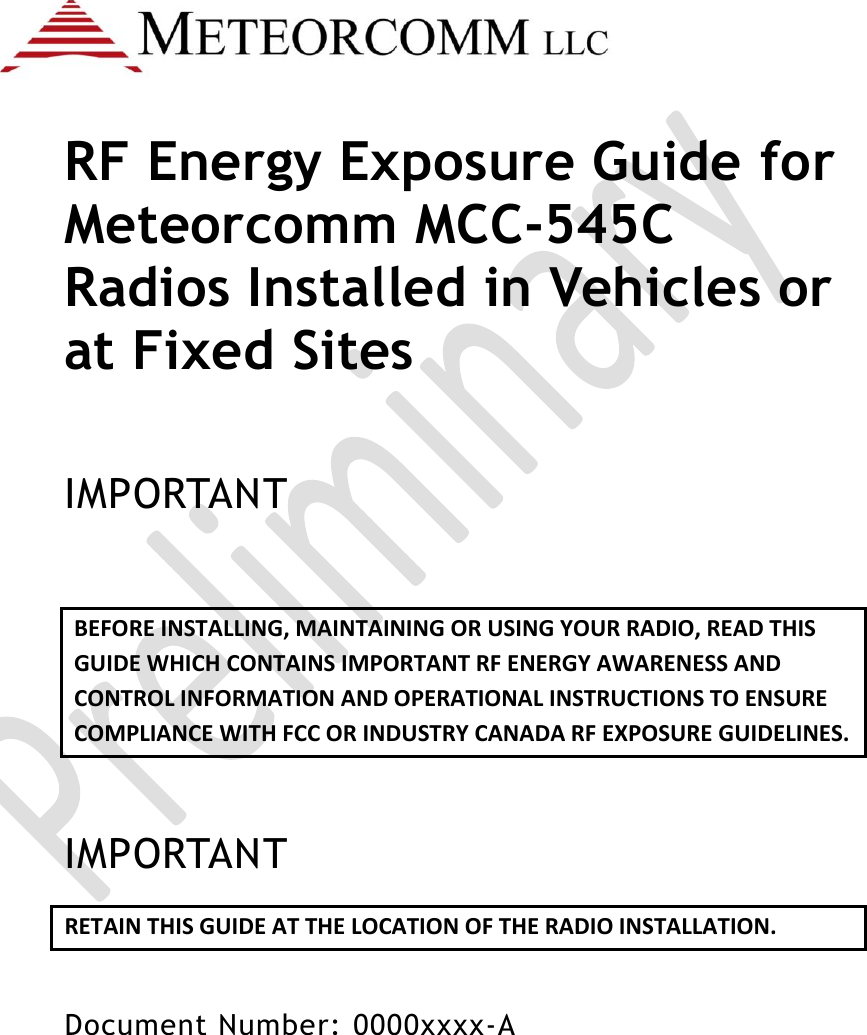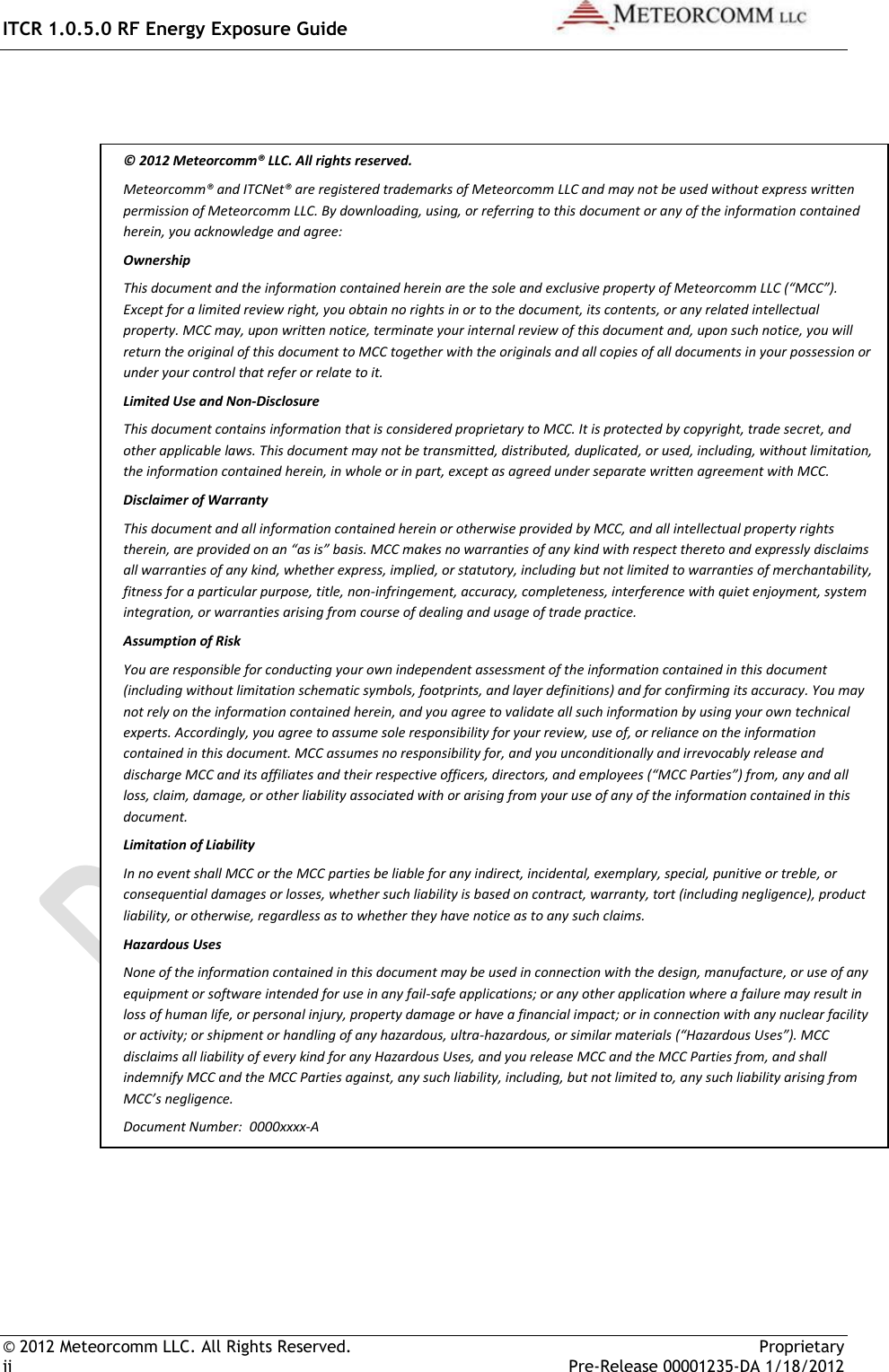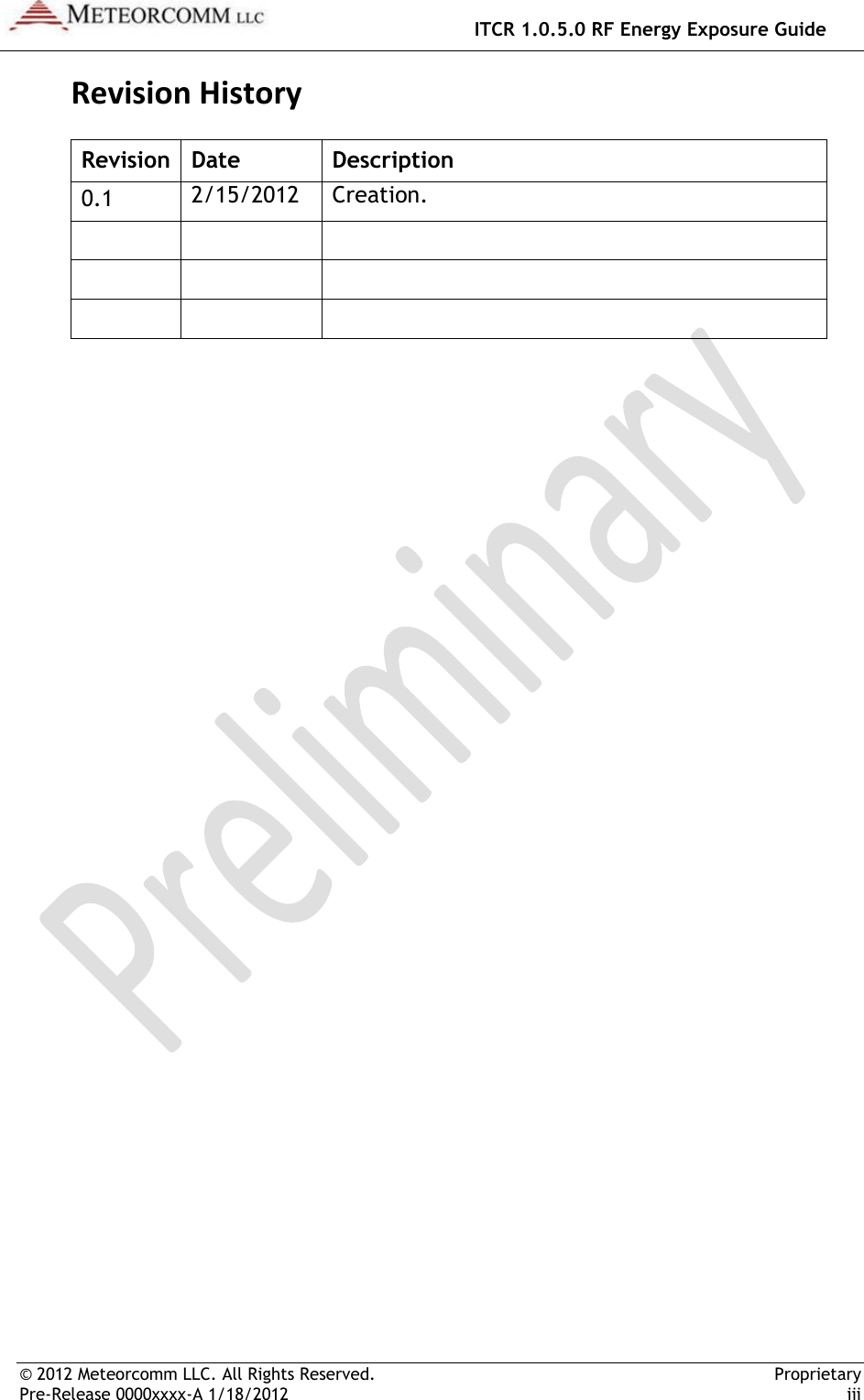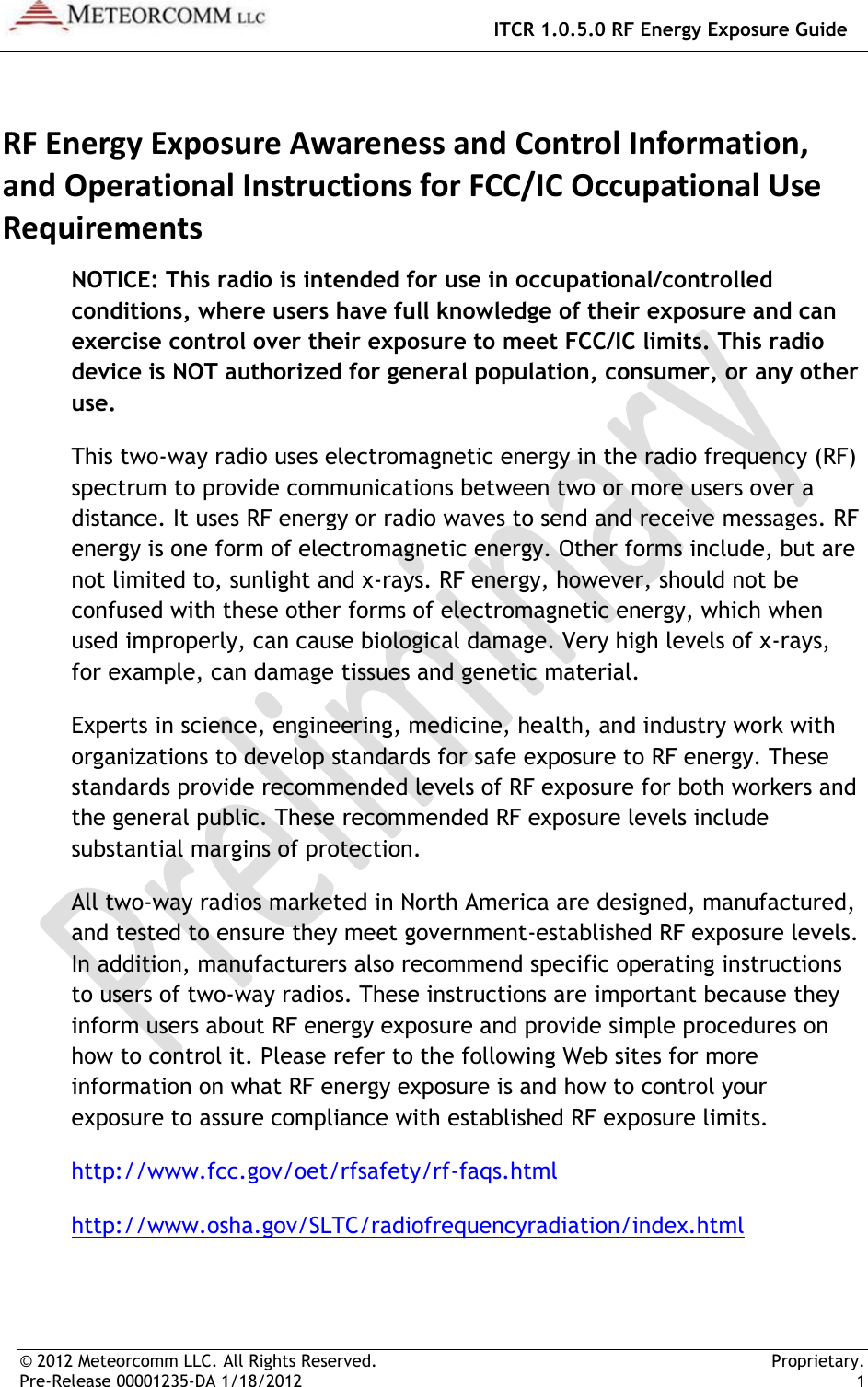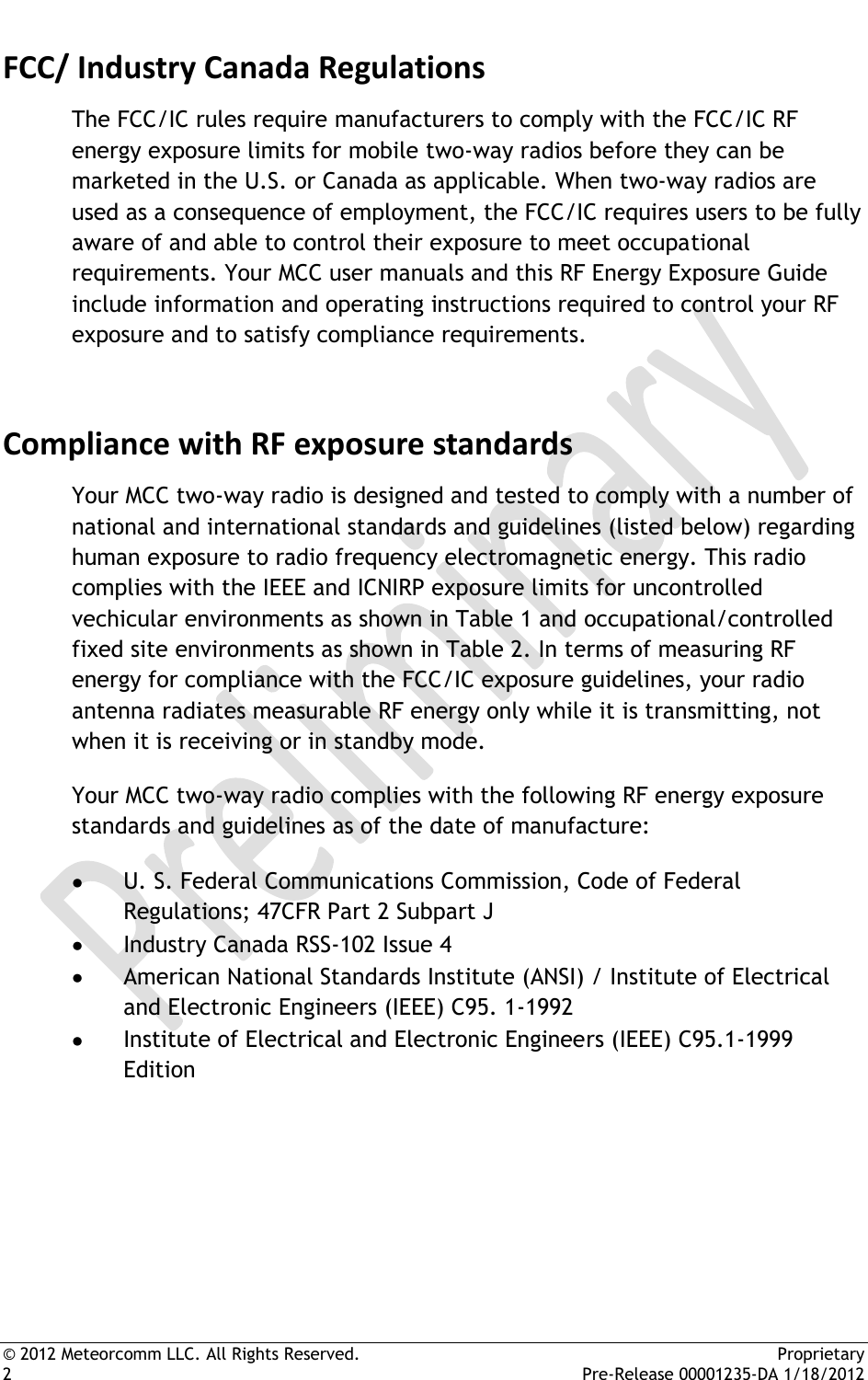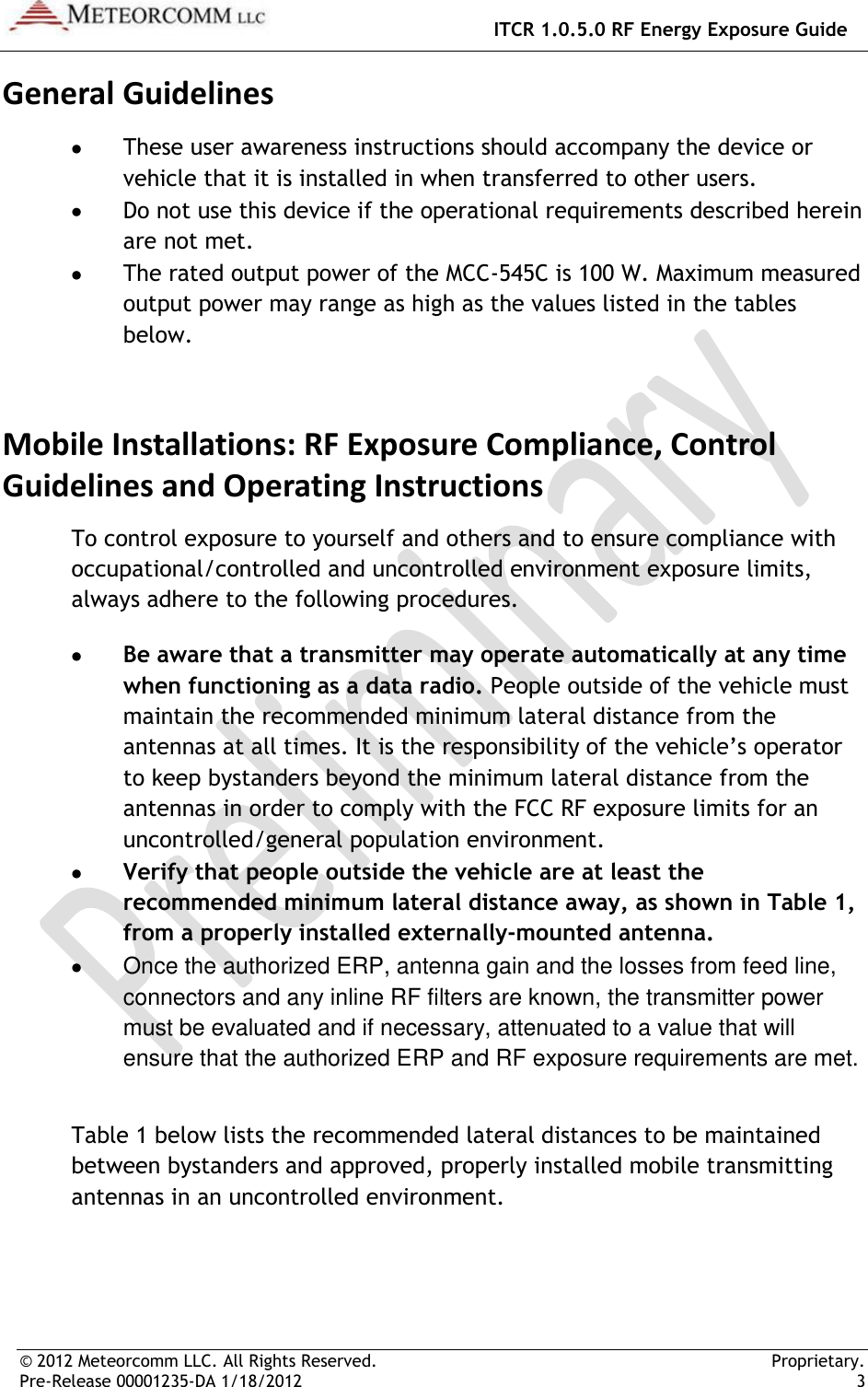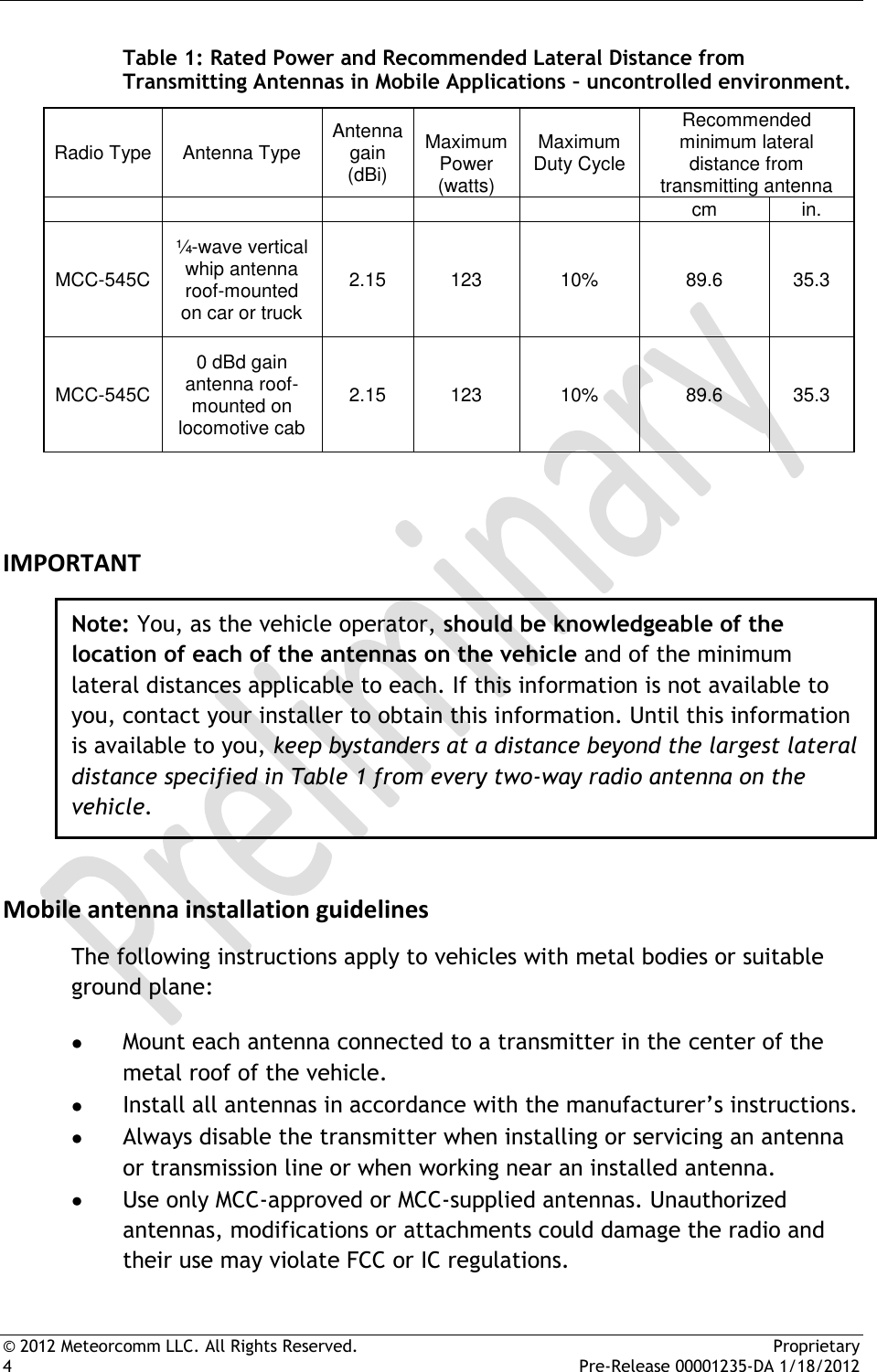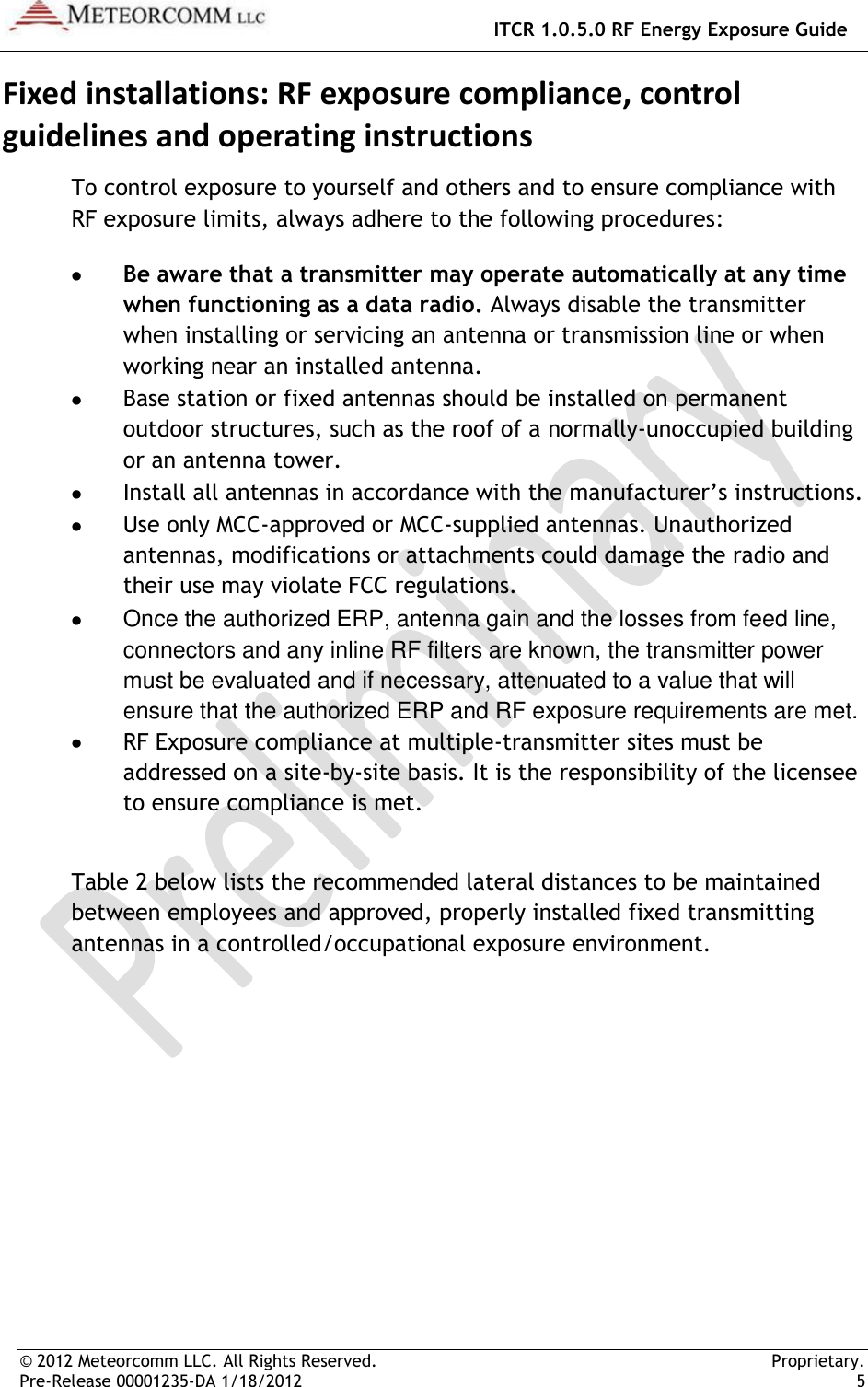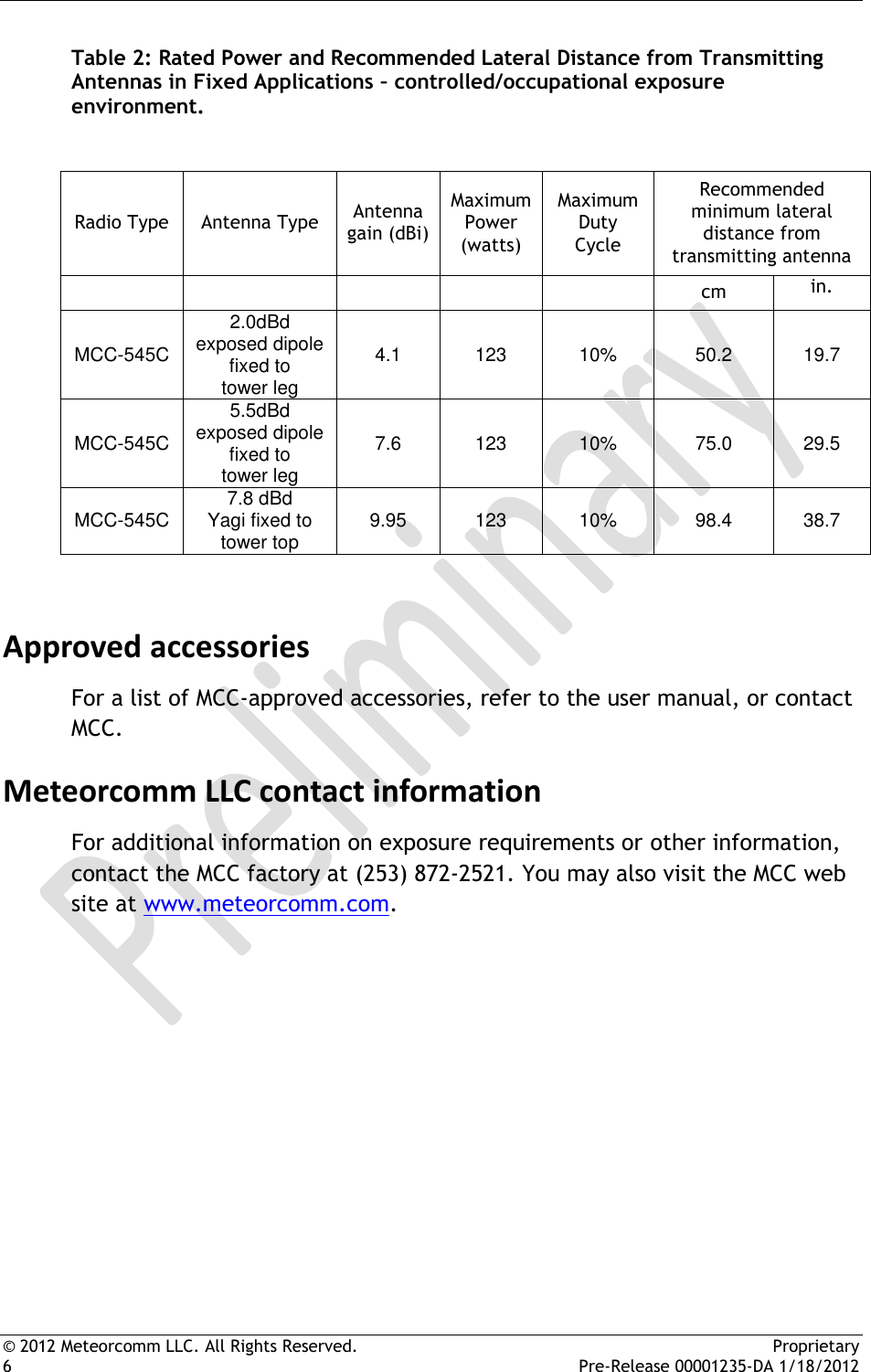Meteorcomm 54505003-01 Packet Data Radio Transceiver - Fixed or Mobile User Manual ITCR 1 0 5 0 RF Energy Exposure Guide
Meteorcomm LLC Packet Data Radio Transceiver - Fixed or Mobile ITCR 1 0 5 0 RF Energy Exposure Guide
Contents
- 1. Users Manual
- 2. RF Users Guide
RF Users Guide
